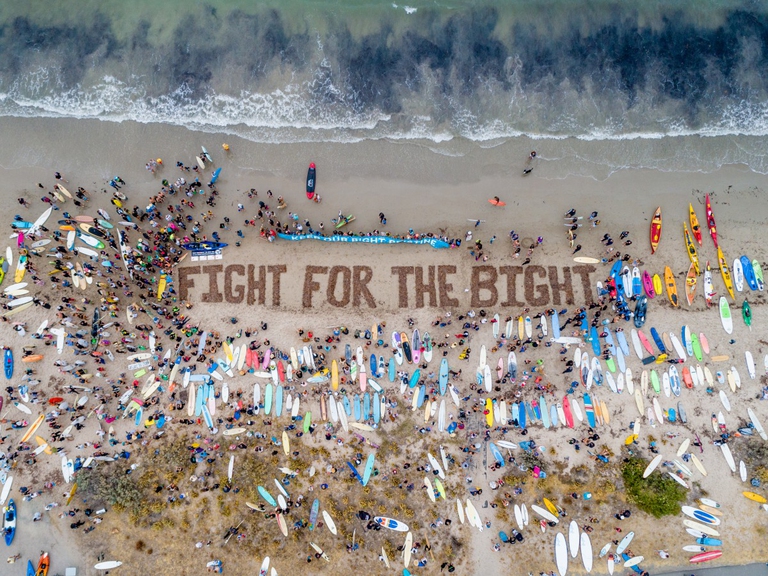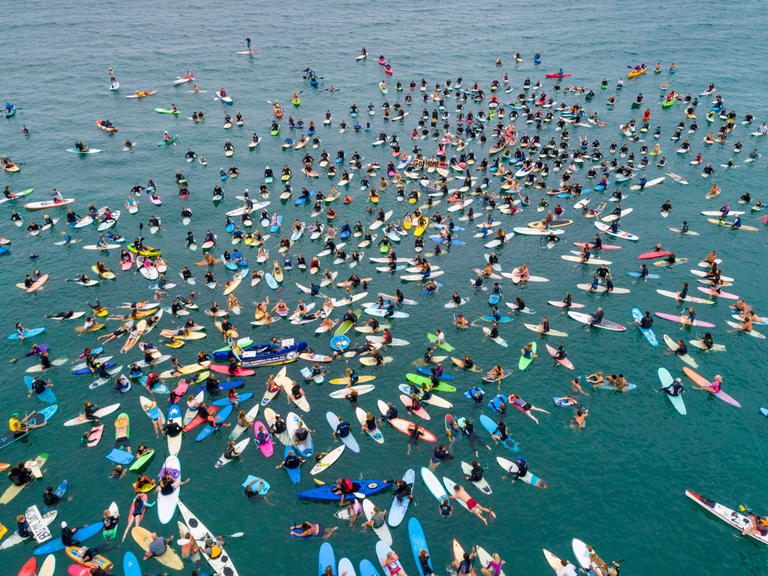
A group of experts in Tokyo suggested pouring radioactive water from Fukushima into the open sea. A marine biochemist explains the consequences of this absurd decision.
A Norwegian energy company wants to carry out oil exploration activities in the Great Australian Bight. The Fight for the Bight movement is stepping up to keep the oil industry out of the wild and pristine waters of southern Australia.
What bonds man to the ocean is a deep, primordial relationship. It may sound redundant but the ocean is a source of life, or better, it is life. The origin of species, in fact, is linked to those depths, which are today home to thousands of unique species, and oceans alone produce half the oxygen we breathe on Earth. Their swell, which continues imperturbably, is mesmerising, healing. And it’s undoubtedly an ancestral call that gave life to a discipline that celebrates the harmony with water and its movement – surfing. A practice that reconnects us to nature, leaving us at its mercy, and teaches us about freedom, and life. But when this bond is threatened, it’s time to step up to protect it. This is why thousands of Australian surfers have paddled out to sea to speak up against an oil exploration project in the Great Australian Bight.
On 3 March, the beaches and the sea of the town of Victor Harbour, Southern Australia, were filled with people – families, surfers, activists – who have gathered to send a clear message to the oil industry: back off.
View this post on Instagram
In the present case, the addressee is Equinor, a Norwegian energy company (two-thirds owned by the government) that wants to carry out oil exploration activities in Australian waters. Since 2017 Equinor is operator and 100 per cent owner of two exploration permits (Epp 39 and Epp 40) in the Bight, covering 12,000 square kilometres. The company thus presented a plan to place an offshore well, 372 kilometres from the coast and 476 kilometres from Port Lincoln.
Equinor is pushing ahead with its totally irresponsible plan to open up a new oil precinct in the pristine, deep and rough waters of the Great Australian Bight.Peter Owen, Wilderness Society
The project’s draft Environmental Plan (EP), which outlines the activities and the potential risks they bring about, must be approved by the indsurty regulator NOPSEMA, the National offshore petroleum safety and environmental management authority. “This draft EP is the result of more than two years of careful preparation and demonstrates how we can drill safely and includes a robust emergency response plan,” Equinor commented.
The 1,500-page draft, however, also includes a map created by combining 100 oil spill simulations. It shows how the black tide could reach any point in the Bight due to the bay’s size and currents, from Western Australia’s coasts to the areas around Sydney in New South Wales, to the Victoria state and even Tasmania. Equinor’s plan has been published on NOPSEMA’s website and is open for comments for 30 days, until 20 March. This is how the mobilisation has started, with people from all around the world raising their voices, writing to Equinor and organising new protests to ask to keep the Bight free from oil.
Drilling in the Great Australian Bight, with its extreme depth and violent oceans, is dangerous and irresponsible.Nathaniel Pelle, senior campaigner Greenpeace
The Great Australian Bight is home to incredible biodiversity. Its extent (the smaller bay alone is 1,160 kilometres), its depths and currents are the ideal habitat to many marine species, from sea birds to fish and marine mammals, such as sea lions, turtles and whales. Whales, in fact, migrate from Antarctica every year to breed and calve. The life in the bay is so unique that scientists estimate that 85 per cent of the species that live in the Bight are found nowhere else on Earth. Moreover, many local communities depend on the ocean for their livelihoods and on the activities linked to it as a source of income, from fishery to tourism.
This place is Australia’s whale nursery, it’s populated by probably the highest concentration of dolphins in the world, and is home to more unique species than the Great Barrier Reef.Great Australian Bight Alliance
View this post on Instagram
With the environment and our minds still dealing with the consequences of the worst environmental disaster in history – the Deepwater Horizon oil spill in the Gulf of Mexico in 2010, Australia and the entire world can’t even remotely allow a similar accident to be looming over, and eventually happen again. So movements like the Fight for the Bight are in the end a call to all ocean lovers. To anyone who cherishes each and every wave, rock and creature down there – from the biggest to the tiniest – and wants it to remain as it is.
Siamo anche su WhatsApp. Segui il canale ufficiale LifeGate per restare aggiornata, aggiornato sulle ultime notizie e sulle nostre attività.
![]()
Quest'opera è distribuita con Licenza Creative Commons Attribuzione - Non commerciale - Non opere derivate 4.0 Internazionale.
A group of experts in Tokyo suggested pouring radioactive water from Fukushima into the open sea. A marine biochemist explains the consequences of this absurd decision.
The decline in grey and humpback whales in the Pacific and Atlantic Oceans has been traced to food shortages caused by rising ocean temperatures.
The United Nations has launched a major international alliance for ocean science, undertaking a mission close to all our hearts.
The cargo ship that ran aground off the coast of Mauritius on 25 July, causing incalculable damage, has split in two and its captain has been arrested.
The largest coral reef in the world is severely threatened by climate change, but researchers are developing strategies that could contribute to saving the Great Barrier Reef.
Seychelles have extended its marine protected area, which now covers over 400,000 square kilometres, an area larger than Germany.
Norwegian oil giant Equinor had pulled out of drilling for oil in the Great Australian Bight, one of the country’s most uncontaminated areas. A victory for activists and surfers who are now campaigning for the area to be protected forever.
30 per cent of the planet needs to be protected to stop precipitous species decline. The UN has set out its aims for the the COP15 on biodiversity scheduled for Kunming, China in October.
Ocean warming has risen to record highs over the last five years: just in 2019 the heat released into the world’s oceans was equivalent to that of 5-6 atomic bombs per second. The culprit, no doubt, is climate change.










